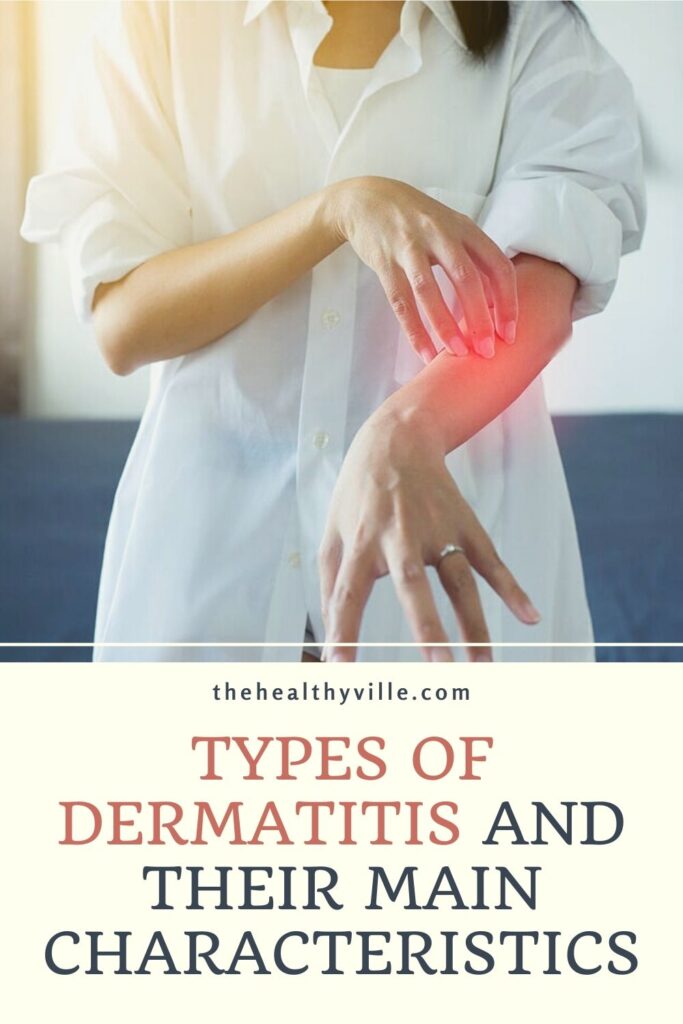Types of dermatitis cause different itching and irritation of the skin. However, there are some differences between the clinical manifestations.
There are several types of dermatitis, although all are characterized by causing skin irritation. It is not a contagious disease, but it often causes discomfort or embarrassment in those who suffer from it. As its name implies, the superficial layer of the skin or the dermis is what is altered.
Now, as it manifests itself in different forms, it has different origins. Likewise, they present with different symptoms and, therefore, the treatment is not the same in all cases. How to differentiate them? Next, we will tell you its main characteristics.
Main types of dermatitis
In most cases of dermatitis, the skin is dry and itchy or rash. Also, various areas may be red and swollen. It can even be expressed with blisters, suppuration, scabs or peeling.
To mitigate these symptoms, it is essential to ensure good hydration. After attending a dermatology consultation, the professional may suggest the use of ointments, medicated shampoos and creams for its treatment. What types of dermatitis are there?
Atopic dermatitis
Atopic dermatitis presents with flare-ups that come and go intermittently throughout life. Often manifests with redness and severe itching. In addition, it appears in the form of red plaques with vesicles, desquamation or marked skin folds, according to the phase in which it is.
The cause of this skin condition is unknown, however a study in the International Journal of Health Sciences found that it is seen more frequently in people with a genetic predisposition and a family history of seasonal allergies or asthma. Likewise, food and environmental factors influence.
Its most common manifestation is the following:
- Intense itching and abrasions from intense scratching.
- Cracked, scaly, or erythematous patches of skin.
- Small vesicles that can secrete fluid.
- Scabs.
When the lesions resolve, the affected area is usually slightly pigmented. However, it is something that improves with time, especially with treatment.
Neurodermatitis
Neurodermatitis or lichen simplex chronicus appears from repetitive scratching. Most cases are evidenced by a single plate on the wrist, head, forearm, or ankle. The clinical manifestations of this type of dermatitis include the following:
- Itching in a limited area of the skin.
- Areas of peeling skin.
- An area of skin that is raised and rough, reddened, or darker than the rest of the skin.
Stasis dermatitis
Also called varicose, stasis dermatitis occurs due to the accumulation of fluids in the lower legs which, in turn, is caused by varicose veins or circulatory disturbances. The swelling in this part of the body creates pressure under the skin and prevents it from obtaining an optimal amount of oxygen and blood.
Symptoms can vary in each person, depending on the severity with which it occurs. In any case, it presents the clinical manifestations that we comment on below:
- Swelling.
- Ulcers, suppuration and scabs.
- Thickened and reddened skin on the legs or ankles.
- Pruritus.
Seborrheic dermatitis
This is the most common type of the condition. It is due to the inflammation of the most superficial layers of the skin. Where there’s a concentration of a large number of sebaceous glands, it appears there.
Its cause is not familiar, although some believe it may be related to the Malassezia fungus. Stress, obesity, extreme climates or neurological conditions are risk factors for its manifestation. In infants, we call it cradle cap. Some of its symptoms include:
- Resistant and itchy dandruff.
- Reddened skin.
- Yellow scales or crusts on the scalp, face, ears, or other part of the body.
Allergic contact dermatitis
Allergic contact dermatitis arises from direct contact with allergens. In fact, usually it affects only the area that came into contact with the substance. The most common allergens include perfumes, cosmetics, costume jewelry, and hair dyes. The most common symptoms are the following:
- Itching and swelling.
- Blisters, fluid discharge, and scabs.
- Acne.
Perioral dermatitis
Perioral dermatitis causes tiny red bumps with purulent contents around the mouth. In fact, it can affect the skin around the cheeks, eyes, or nose. It does not present an acute symptomatology, but it generates important aesthetic problems in young people.
The exact cause of the condition is not familiar, but some believe misuse or overuse of corticosteroid inhalers, nasal creams and sprays to be the reason.
Dermatitis herpetiformis
Dermatitis herpetiformis is a chronic and autoimmune disease that can occur in anyone, more frequently in those with celiac disease and gluten intolerance. It presents with the following symptoms and signs:
- Small vesicles on the elbows, back, knees and buttocks.
- Burning and intense itching.
- Rashes and scratching marks on the skin.
What to do if you suspect one of the types of dermatitis?
For each of the types of dermatitis there is a specific treatment. Therefore, when faced with symptoms, it is best to go to the dermatologist to find out the therapeutic options depending on the case. The professional will also advise on other care to keep the discomfort under control.
Don’t forget to SHARE the types of dermatitis with your friends and family on your social networks!

